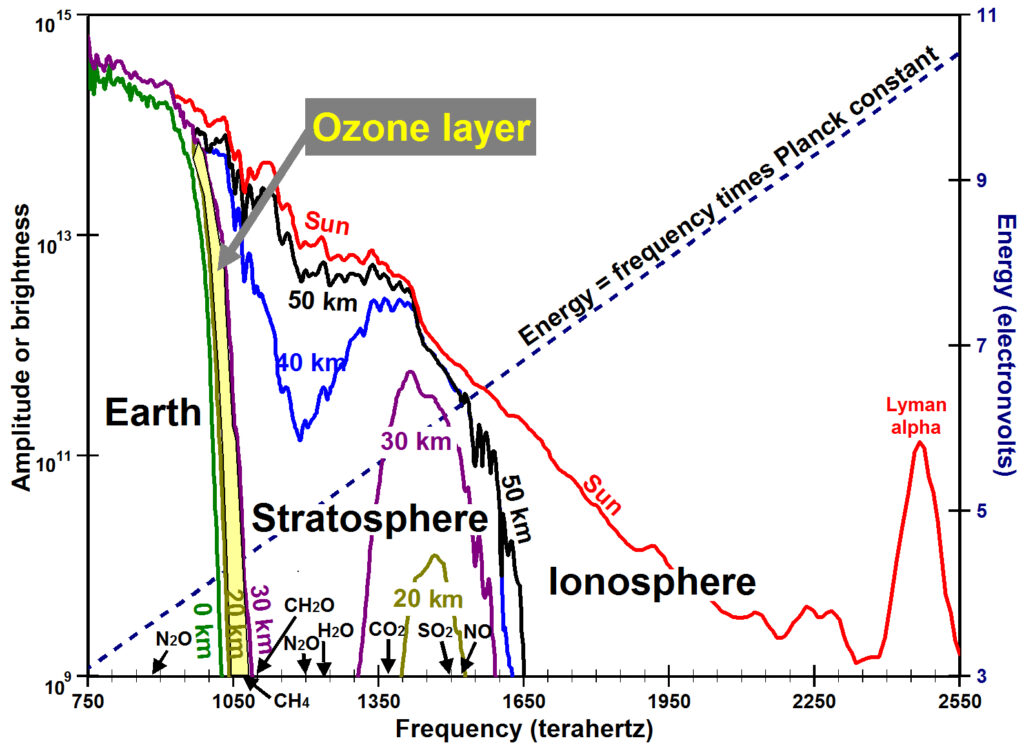Solar flux as a Function of Altitude

Nearly all ultraviolet energy from Sun (red line) at frequencies greater than 1650 terahertz is absorbed above the stratosphere (black line at 50 km) and most at frequencies greater than 1045 treahertz is absorbed above the troposphere. Global warming occurs when energy normaly absorbed in the stratosphere reaches Earth’s surface. Based on Figure 7 on page 260 of DeMore et al. (1997)
The small amount of highest energy solar radiation in the extreme ultraviolet (ν>2418 thz, λ<124 nm, E>10.0 eV) is typically absorbed at altitudes above 85 km causing photoionization primarily of N2, O2, and NO, forming the ionosphere. The large Lyman-alpha spectral peak (Fig. 2) radiated at 2465 terahertz by hydrogen, which makes up 75% of Sun’s mass, normally dissociates O2, H2O, and NO at altitudes above 70 km, but during solar maximums this peak can be 1.5 times larger than during solar minimums (Woods et al., 2000) and may not all be absorbed until well into the stratosphere. Note that essentially all of the solar energy for frequencies greater than 1650 terahertz has been absorbed above 50 km by a variety of photochemical processes that do not need to be detailed here.
The onset of photodissociation is shown along the bottom axis for some important gases (Turco, 1975) (Hydutsky et al., 2008). In addition HO2 is dissociated for λ<456 nm; HNO3 for λ<598 nm; N2O5 for λ<750 nm (Turco, 1975).